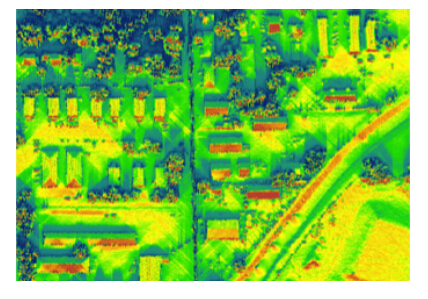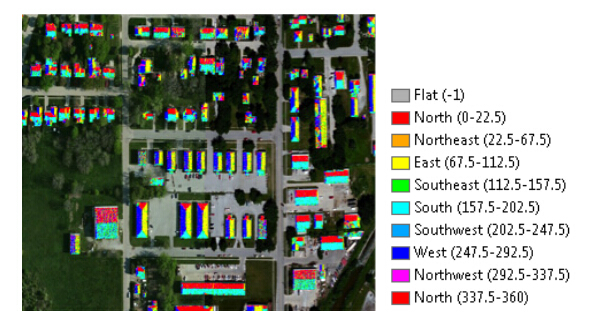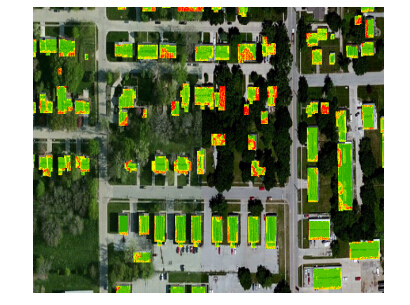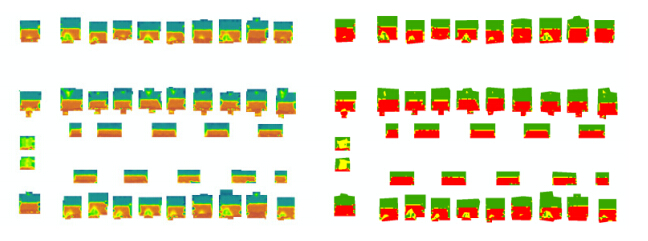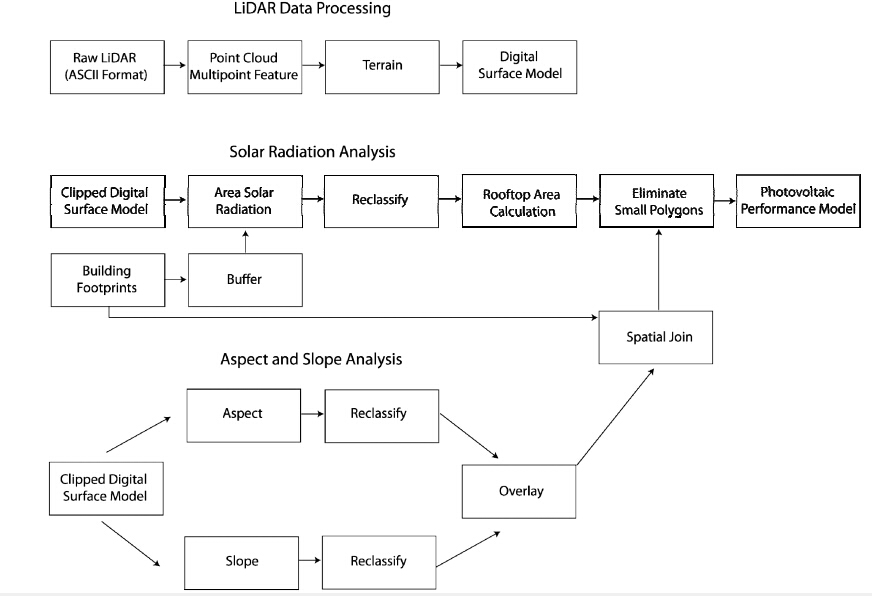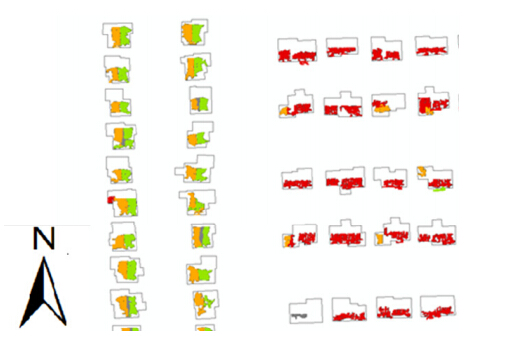|
[1]
|
Pimentel D (2012) World overpopulation. Environ Dev Sustain 14: 151. doi: 10.1007/s10668-011-9336-2

|
|
[2]
|
Tilman D, Balzer C, Hill J, et al. (2011) Global food demand and the sustainable intensification of agriculture. Proc Natl Acad Sci USA 108: 20260–20264. doi: 10.1073/pnas.1116437108

|
|
[3]
|
Béné C, Barange M, Subasinghe R, et al. (2015) Feeding 9 billion by 2050-Putting fish back on the menu. Food Sec 7: 261. doi: 10.1007/s12571-015-0427-z

|
|
[4]
|
Khush G (2001) Green revolution: the way forward. Nat Rev Genet 2: 815–822.
|
|
[5]
|
Araus J, Li J, Parry M, et al. (2014) Phenotyping and other breeding approaches for a New Green Revolution. J Integr Plant Biol 56: 422–424. doi: 10.1111/jipb.12202

|
|
[6]
|
Garcia-Fraile P, Carro L, Robledo M, et al. (2012) Rhizobium promotes non-legumes growth and quality in several production steps: towards a biofertilization of edible raw vegetables healthy for humans. PLoS One 7: e38122. doi: 10.1371/journal.pone.0038122

|
|
[7]
|
Flores-Felix JD, Silva LR, Rivera LP, et al. (2015) Plants probiotics as a tool to produce highly functional fruits: the case of Phyllobacterium and vitamin C in strawberries. PLoS One 10: e0122281. doi: 10.1371/journal.pone.0122281

|
|
[8]
|
Haas D, Keel C (2003) Regulation of antibiotic production in root-colonizing Pseudomonas spp. and relevance for biological control of plant disease. Ann Rev Phytopathol 41: 117–153.
|
|
[9]
|
Kloepper J, Schrot M (1978) Plant growth-promoting rhizobacteria on radishes. Proceedings of the 4th International Conference on Plant Pathogenic Bacteria 2: 879–882.
|
|
[10]
|
Gray EJ, Smith DL (2005) Intracellular and extracellular PGPR: commonalities and distinctions in the plant-bacterium signaling processes. Soil Biol Biochem 37: 395–412. doi: 10.1016/j.soilbio.2004.08.030

|
|
[11]
|
Hardoim PR, van Overbeek LS, Berg G, et al. (2015) The hidden world within plants: ecological and evolucionary considerations for defining functioning of microbial endophytes. Microbiol Mol Biol Rev 79: 293–320. doi: 10.1128/MMBR.00050-14

|
|
[12]
|
Brewin NJ (1991) Development of the legume root nodule. Ann Rev Cell Biol 7: 191–226. doi: 10.1146/annurev.cb.07.110191.001203

|
|
[13]
|
Suzaki T, Kawaguchi M (2014) Root nodulation: a developmental program involving cell fate conversion triggered by symbiotic bacterial infection. Curr Opin Plant Biol 21: 16–22. doi: 10.1016/j.pbi.2014.06.002

|
|
[14]
|
Pawlowski K, Demchenko KN (2012) The diversity of actinorhizal symbiosis. Protoplasma 249: 967–979. doi: 10.1007/s00709-012-0388-4

|
|
[15]
|
Vessey JK, Pawlowski K, Bergman B (2005) Root-based N2-fixing symbioses: Legumes, actinorhizal plants, Parasponia sp. and cycads. Plant Soil 274: 51–78. doi: 10.1007/s11104-005-5881-5

|
|
[16]
|
Khalid A, Arshad M, Shaharoona B, et al. (2009) Plant Growth Promoting Rhizobacteria and Sustainable Agriculture, In: Microbial Strategies for Crop Improvement, Berlin: Springer, 133–160.
|
|
[17]
|
Bhattacharyya PN, Jha DK (2012) Plant growth-promoting rhizobacteria (PGPR): emergence in agriculture. World J Microbiol Biotechnol 28: 1327–1350. doi: 10.1007/s11274-011-0979-9

|
|
[18]
|
García-Fraile P, Menéndez E, Rivas R (2015) Role of bacterial biofertilizers in agriculture and forestry. AIMS Bioeng 2: 183–205. doi: 10.3934/bioeng.2015.3.183

|
|
[19]
|
Vejan P, Abdullah R, Khadiran T, et al. (2016) Role of plant growth promoting rhizobacteria in agricultural sustainability-a review. Molecules 21: 573. doi: 10.3390/molecules21050573

|
|
[20]
|
Malusá E, Vassilev N (2014) A contribution to set a legal framework for biofertilisers. Appl Microbiol Biotechnol 98: 6599–6607. doi: 10.1007/s00253-014-5828-y

|
|
[21]
|
Reinhold-Hurek B, Hurek T (1998) Interactions of gramineous plants with Azoarcus spp. and other Diazotrophs: identification, localization, and perspectives to study their function. Crit Rev Plant Sci 17: 29–54.
|
|
[22]
|
Sabry SRS, Saleh SA, Batchelor CA, et al. (1997) Endophytic establishment of Azorhizobium caulinodans in wheat. Proc Biol Sci 264: 341–346. doi: 10.1098/rspb.1997.0049

|
|
[23]
|
Tejera N, Lluch C, Martínez-Toledo MV, et al. (2005) Isolation and characterization of Azotobacter and Azospirillum strains from the sugarcane rhizosphere. Plant Soil 270: 223–232. doi: 10.1007/s11104-004-1522-7

|
|
[24]
|
Yadegari M, Rahmani HA, Noormohammadi G, et al. (2010) Plant growth promoting rhizobacteria increase growth, yield and nitrogen fixation in Phaseolus vulgaris. J Plant Nutr 33: 1733–1743. doi: 10.1080/01904167.2010.503776

|
|
[25]
|
Isawa T, Yasuda M, Awazaki H, et al. (2010) Azospirillum sp. strain B510 enhances rice growth and yield. Microbes Environ 25: 58–61.
|
|
[26]
|
Hungria M, Nogueira MA, Araujo RS (2013) Co-inoculation of soybeans and common beans with rhizobia and azospirilla: strategies to improve sustainability. Biol Fert Soils 49: 791–801. doi: 10.1007/s00374-012-0771-5

|
|
[27]
|
Sahoo RK, Ansari MW, Pradhan M, et al. (2014) Phenotypic and molecular characterization of native Azospirillum strains from rice fields to improve crop productivity. Protoplasma 251: 943–953. doi: 10.1007/s00709-013-0607-7

|
|
[28]
|
Ramakrishnan K, Selvakumar G (2012) Effect of biofertilizers on enhancement of growth and yield on Tomato (Lycopersicum esculentum Mill.) Int. J Res Bot 2: 20–23.
|
|
[29]
|
Wani SA, Chand S, Ali T (2013) Potential use of Azotobacter chroococcum in crop production: an overview. Curr Agri Res J 1: 35–38. doi: 10.12944/CARJ.1.1.04

|
|
[30]
|
Sahoo RK, Ansari MW, Dangar TK, et al. (2014) Phenotypic and molecular characterisation of efficient nitrogen-fixing Azotobacter strains from rice fields for crop improvement. Protoplasma 251: 511–523. doi: 10.1007/s00709-013-0547-2

|
|
[31]
|
Beneduzi A, Peres D, Vargas LK, et al. (2008) Evaluation of genetic diversity and plant growth promoting activities of nitrogen-fixing bacilli isolated from rice fields in South Brazil. App Soil Ecol 39: 311–320. doi: 10.1016/j.apsoil.2008.01.006

|
|
[32]
|
Habibi S, Djedidi S, Prongjunthuek K, et al. (2014) Physiological and genetic characterization of rice nitrogen fixer PGPR isolated from rhizosphere soils of different crops. Plant Soil 379: 51–66. doi: 10.1007/s11104-014-2035-7

|
|
[33]
|
Rana A, Saharan B, Joshi M, et al. (2011) Identification of multi-trait PGPR isolates and evaluating their potential as inoculants for wheat. Ann Microbiol 61: 893–900. doi: 10.1007/s13213-011-0211-z

|
|
[34]
|
Kao CM, Chen SC, Chen YS, et al. (2003) Detection of Burkholderia pseudomallei in rice fields with PCR-based technique. Folia Microbiol (Praha) 48: 521–552. doi: 10.1007/BF02931334

|
|
[35]
|
Govindarajan M, Balandreau J, Kwon SW, et al. (2007) Effects of the inoculation of Burkholderia vietnamensis and related endophytic diazotrophic bacteria on grain yield of rice. Microb Ecol 55: 21–37.
|
|
[36]
|
Berge O, Heulin T, Achouak W, et al. (1991) Rahnella aquatilis, a nitrogen-fixing enteric bacterium associated with the rhizosphere of wheat and maize. Can J Microbiol 37: 195–203. doi: 10.1139/m91-030

|
|
[37]
|
Taulé C, Mareque C, Barlocco C, et al. (2012) The contribution of nitrogen fixation to sugarcane (Saccharum officinarum L.), and the identification and characterization of part of the associated diazotrophic bacterial community. Plant Soil 356: 35–49.
|
|
[38]
|
Simonet P, Normand P, Moiroud A, et al. (1990) Identification of Frankia strains in nodules by hybridization of polymerase chain reaction products with strain-specific oligonucleotide probes. Arch Microb 153: 235–240. doi: 10.1007/BF00249074

|
|
[39]
|
Muñoz-Rojas J, Caballero-Mellado J (2003) Population dynamics of Gluconacetobacter diazotrophicus in sugarcane cultivars and its effect on plant growth. Microb Ecol 46: 454–464. doi: 10.1007/s00248-003-0110-3

|
|
[40]
|
Elbeltagy A, Nishioka K, Sato T, et al. (2001) Endophytic colonization and in planta nitrogen fixation by a Herbaspirillum sp. isolated from wild rice species. Appl Environ Microbiol 67: 5285–5293.
|
|
[41]
|
Valverde A, Velazquez E, Gutierrez C, et al. (2003) Herbaspirillum lusitanum sp. nov., a novel nitrogen-fixing bacterium associated with root nodules of Phaseolus vulgaris. Int J Syst Evol Microbiol 53: 1979–1983.
|
|
[42]
|
Alves GC, Videira SS, Urquiaga S, et al. (2015) Differential plant growth promotion and nitrogen fixation in two genotypes of maize by several Herbaspirillum inoculants. Plant Soil 387: 307–321. doi: 10.1007/s11104-014-2295-2

|
|
[43]
|
Puri A, Padda KP, Chanway CP (2016) Evidence of nitrogen fixation and growth promotion in canola (Brassica napus L.) by an endophytic diazotroph Paenibacillus polymyxa P2b-2R. Biol Fert Soils 52: 119–125.
|
|
[44]
|
Peix A, Ramírez-Bahena MH, Velázquez E, et al. (2015) Bacterial associations with legumes. Crit Rev Plant Sci 34: 17–42. doi: 10.1080/07352689.2014.897899

|
|
[45]
|
Aloni R, Aloni E, Langhans M, et al. (2006) Role of cytokinin and auxin in shaping root architecture: regulating vascular differentiation, lateral root initiation, root apical dominance and root gravitropism. Ann Bot 97: 883–893. doi: 10.1093/aob/mcl027

|
|
[46]
|
Ahmed A, Hasnain S (2010) Auxin producing Bacillus sp.: Auxin quantification and effect on the growth Solanum tuberosum. Pure Appl Chem 82: 313–319.
|
|
[47]
|
Sokolova MG, Akimova GP, Vaishlya OB (2011) Effect of phytohormones synthesized by rhizosphere bacteria on plants. App Biochem Microbiol 47: 274–278. doi: 10.1134/S0003683811030148

|
|
[48]
|
Liu F, Xing S, Ma H, et al. (2013) Cytokinin-producing, plant growth-promoting rhizobacteria that confer resistance to drought stress in Platycladus orientalis container seedlings. Appl Microbiol Biotechnol 97: 9155–9164. doi: 10.1007/s00253-013-5193-2

|
|
[49]
|
Ortiz-Castro R, Valencia-Cantero E, López-Bucio J (2008) Plant growth promotion by Bacillus megaterium involves cytokinin signaling. Plant Signal Behav 3: 263–265. doi: 10.4161/psb.3.4.5204

|
|
[50]
|
Kang SM, Khan AL, Waqas M, et al. (2015) Gibberellin-producing Serratia nematodiphila PEJ1011 ameliorates low temperature stress in Capsicum annuum L. Eur J Soil Biol 68: 85–93. doi: 10.1016/j.ejsobi.2015.02.005

|
|
[51]
|
Asaf S, Khan MA, Khan AL, et al. (2017) Bacterial endophytes from arid land plants regulate endogenous hormone content and promote growth in crop plants: an example of Sphingomonas sp. and Serratia marcescens. J Plant Interact 12: 31–38. doi: 10.1080/17429145.2016.1274060

|
|
[52]
|
Suarez C, Cardinale M, Ratering S, et al. (2015) Plant growth-promoting effects of Hartmannibacter diazotrophicus on summer barley (Hordeum vulgare L.) under salt stress. Appl Soil Ecol 95: 23–30.
|
|
[53]
|
Bent E, Tuzun S, Chanway CP, et al. (2001) Alterations in plant growth and in root hormone levels of lodgepole pines inoculated with rhizobacteria. Can J Microbiol 47: 793–800. doi: 10.1139/w01-080

|
|
[54]
|
Bakaeva MD, Chetverikov SP, Korshunova TY, et al. (2017) The new bacterial strain Paenibacillus sp. IB-1: A producer of exopolysaccharide and biologically active substances with phytohormonal and antifungal activities. App Biochem Microbiol 53: 201–208.
|
|
[55]
|
Galland M, Gamet L, Varoquaux F, et al. (2012) The ethylene pathway contributes to root hair elongation induced by the beneficial bacteria Phyllobacterium brassicacearum STM196. Plant Sci 190: 74–81. doi: 10.1016/j.plantsci.2012.03.008

|
|
[56]
|
Shaharoona B, Naveed M, Arshad M, et al. (2008) Fertilizer-dependent efficiency of Pseudomonas for improving growth, yield, and nutrient use efficiency of wheat (Triticum aestivum L.). Appl Microbiol Biotechnol 79: 147–155. doi: 10.1007/s00253-008-1419-0

|
|
[57]
|
Ahmad M, Zahir ZA, Khalid M, et al. (2013) Efficacy of Rhizobium and Pseudomonas strains to improve physiology, ionic balance and quality of mung bean under salt-affected conditions on farmer's fields. Plant Physiol Biochem 63: 170–176. doi: 10.1016/j.plaphy.2012.11.024

|
|
[58]
|
Flores-Felix JD, Menendez E, Rivera LP, et al. (2013) Use of Rhizobium leguminosarum as a potential biofertilizer for Lactuca sativa and Daucus carota crops. J Plant Nutr Soil Sci 176: 876–882. doi: 10.1002/jpln.201300116

|
|
[59]
|
Brígido C, Nascimento FX, Duan J, et al. (2013) Expression of an exogenous 1-aminocyclopropane-1-carboxylate deaminase gene in Mesorhizobium spp. reduces the negative effects of salt stress in chickpea. FEMS Microbiol Lett 349: 46–53.
|
|
[60]
|
Flores-Félix JD, Marcos-García M, Silva LR, et al. (2015) Rhizobium as plant probiotic for strawberry production under microcosm conditions. Symbiosis 67: 25–32. doi: 10.1007/s13199-015-0373-8

|
|
[61]
|
Menéndez E, Escribano-Viana R, Flores-Félix JD, et al. (2016) Rhizobial biofertilizers for ornamental plants, In: Biological Nitrogen Fixation and Beneficial Plant-Microbe Interaction, Springer International Publishing, 13–21.
|
|
[62]
|
Brígido C, Glick BR, Oliveira S (2016) Survey of plant growth-promoting mechanisms in native Portuguese Chickpea Mesorhizobium isolates. Microb Ecol 73: 900–915.
|
|
[63]
|
Kong Z, Glick BR, Duan J, et al. (2015) Effects of 1-aminocyclopropane-1-carboxylate (ACC) deaminase-overproducing Sinorhizobium meliloti on plant growth and copper tolerance of Medicago lupulina. Plant Soil 391: 383–398. doi: 10.1007/s11104-015-2434-4

|
|
[64]
|
Khan AL, Waqas M, Kang SM, et al. (2014) Bacterial endophyte Sphingomonas sp. LK11 produces gibberellins and IAA and promotes tomato plant growth. J Microbiol 52: 689–695.
|
|
[65]
|
Verma VC, Singh SK, Prakash S (2011) Bio-control and plant growth promotion potential of siderophore producing endophytic Streptomyces from Azadirachta indica A. Juss. J Basic Microb 51: 550–556. doi: 10.1002/jobm.201000155

|
|
[66]
|
Boudjeko T, Tchinda RAM, Zitouni M, et al. (2017) Streptomyces cameroonensis sp. nov., a Geldanamycin producer that promotes Theobroma cacao growth. Microbes Environ 32: 24–31.
|
|
[67]
|
Estrada GA, Baldani VLD, de Oliveira DM, et al. (2013) Selection of phosphate-solubilizing diazotrophic Herbaspirillum and Burkholderia strains and their effect on rice crop yield and nutrient uptake. Plant Soil 369: 115–129. doi: 10.1007/s11104-012-1550-7

|
|
[68]
|
Jog R, Pandya M, Nareshkumar G, et al. (2014) Mechanism of phosphate solubilization and antifungal activity of Streptomyces spp. isolated from wheat roots and rhizosphere and their application in improving plant growth. Microbiology 160: 778–788.
|
|
[69]
|
Sheng XF (2005) Growth promotion and increased potassium uptake of cotton and rape by a potassium releasing strain of Bacillus edaphicus. Soil Biol Biochem 37: 1918–1922. doi: 10.1016/j.soilbio.2005.02.026

|
|
[70]
|
Han HS, Lee KD (2005) Phosphate and potassium solubilizing bacteria effect on mineral uptake, soil availability and growth of eggplant. Res J Agric Biol Sci 1: 176–180.
|
|
[71]
|
Han HS, Supanjani S, Lee KD (2006) Effect of co-inoculation with phosphate and potassium solubilizing bacteria on mineral uptake and growth of pepper and cucumber. Plant Soil Environ 52: 130–136.
|
|
[72]
|
Sugumaran P, Janarthanam B (2007) Solubilization of potassium containing minerals by bacteria and their effect on plant growth. World J Agric Sci 3: 350–355.
|
|
[73]
|
Singh G, Biswas DR, Marwaha TS (2010) Mobilization of potassium from waste mica by plant growth promoting rhizobacteria and its assimilation by maize (Zea mays) and wheat (Triticum aestivum L.): a hydroponics study under phytotron growth chamber. J Plant Nutr 33: 1236–1251.
|
|
[74]
|
Velázquez E, Silva LR, Ramírez-Bahena MH, et al. (2016) Diversity of potassium-solubilizing microorganisms and their interactions with plants, In: Potassium Solubilizing Microorganisms for Sustainable Agriculture, Springer India, 99–110.
|
|
[75]
|
Zhang C, Kong F (2014) Isolation and identification of potassium-solubilizing bacteria from tobacco rhizospheric soil and their effect on tobacco plants. Appl Soil Ecol 82: 18–25. doi: 10.1016/j.apsoil.2014.05.002

|
|
[76]
|
Subhashini DV (2015) Growth promotion and increased potassium uptake of tobacco by potassium-mobilizing bacterium Frateuria aurantia grown at different potassium levels in vertisols. Commun Soil Sci Plant Anal 46: 210–220. doi: 10.1080/00103624.2014.967860

|
|
[77]
|
Bagyalakshmi B, Ponmurugan P, Marimuthu S (2012) Influence of potassium solubilizing bacteria on crop productivity and quality of tea (Camellia sinensis). Afr J Agric Res 7: 4250–4259.
|
|
[78]
|
Beneduzi A, Ambrosini A, Passaglia LM (2012) Plant growth-promoting rhizobacteria (PGPR): Their potential as antagonists and biocontrol agents. Genet Mol Biol 35: 1044–1051. doi: 10.1590/S1415-47572012000600020

|
|
[79]
|
Radzki W, Gutierrez Manero FJ, Algar E, et al. (2013) Bacterial siderophores efficiently provide iron to iron-starved tomato plants in hydroponics culture. Anton Van Leeuw 104: 321–330. doi: 10.1007/s10482-013-9954-9

|
|
[80]
|
Ghavami N, Alikhani HA, Pourbabaei AA, et al. (2016) Effects of two new siderophore producing rhizobacteria on growth and iron content of maize and canola plants. J Plant Nutr 40: 736–746.
|
|
[81]
|
Egamberdiyeva D (2007) The effect of plant growth promoting bacteria on growth and nutrient uptake of maize in two different soils. Appl Soil Ecol 36: 184–189. doi: 10.1016/j.apsoil.2007.02.005

|
|
[82]
|
El-Akhal MR, Rincon A, Coba de la Pena T, et al. (2013) Effects of salt stress and rhizobial inoculation on growth and nitrogen fixation of three peanut cultivars. Plant Biol (Stuttg) 15: 415–421. doi: 10.1111/j.1438-8677.2012.00634.x

|
|
[83]
|
Lee SW, Lee SH, Balaraju K, et al. (2014) Growth promotion and induced disease suppression of four vegetable crops by a selected plant growth-promoting rhizobacteria (PGPR) strain Bacillus subtilis 21-1 under two different soil conditions. Acta Physiol Plant 36: 1353–1362. doi: 10.1007/s11738-014-1514-z

|
|
[84]
|
Sivasakthi S, Usharani G, Saranraj P (2014) Biocontrol potentiality of plant growth promoting bacteria (PGPR)-Pseudomonas fluorescens and Bacillus subtilis: A review. Afr J Agric Res 9: 1265–1277.
|
|
[85]
|
Li H, Ding X, Wang C, et al. (2016) Control of Tomato yellow leaf curl virus disease by Enterobacter asburiae BQ9 as a result of priming plant resistance in tomatoes. Turk J Biol 40: 150–159. doi: 10.3906/biy-1502-12

|
|
[86]
|
Singh RP, Jha PN (2016) The multifarious PGPR Serratia marcescens CDP-13 augments induced systemic resistance and enhanced salinity tolerance of wheat (Triticum aestivum L.). PloS One 11: e0155026. doi: 10.1371/journal.pone.0155026

|
|
[87]
|
Calvo J, Calvente V, de Orellano ME, et al. (2007) Biological control of postharvest spoilage caused by Penicillium expansum and Botrytis cinerea in apple by using the bacterium Rahnella aquatilis. Int J Food Microbiol 113: 251–257. doi: 10.1016/j.ijfoodmicro.2006.07.003

|
|
[88]
|
Allard S, Enurah A, Strain E, et al. (2014) In situ evaluation of Paenibacillus alvei in reducing carriage of Salmonella enterica serovar Newport on whole tomato plants. App Environ Microbiol 80: 3842–3849. doi: 10.1128/AEM.00835-14

|
|
[89]
|
Xu S, Kim BS (2016) Evaluation of Paenibacillus polymyxa strain SC09-21 for biocontrol of Phytophthora blight and growth stimulation in pepper plants. Trop Plant Pathol 41: 162–168. doi: 10.1007/s40858-016-0077-5

|
|
[90]
|
Yao L, Wu Z, Zheng Y, et al. (2010) Growth promotion and protection against salt stress by Pseudomonas putida Rs-198 on cotton. Eur J Soil Biol 46: 49–54. doi: 10.1016/j.ejsobi.2009.11.002

|
|
[91]
|
Kumar H, Bajpai VK, Dubey RC, et al. (2010) Wilt disease management and enhancement of growth and yield of Cajanus cajan (L) var. Manak by bacterial combinations amended with chemical fertilizer. Crop Protect 29: 591–598.
|
|
[92]
|
Pastor N, Masciarelli O, Fischer S, et al. (2016) Potential of Pseudomonas putida PCI2 for the protection of tomato plants against fungal pathogens. Curr Microbiol 73: 346–353. doi: 10.1007/s00284-016-1068-y

|
|
[93]
|
Raymond J, Siefert JL, Staples CR, et al. (2004) The natural history of nitrogen fixation. Mol Biol Evol 21: 541–554. doi: 10.1093/molbev/msh047

|
|
[94]
|
Grady EN, MacDonald J, Liu L, et al. (2016) Current knowledge and perspectives of Paenibacillus: a review. Microb Cell Fact 15: 203. doi: 10.1186/s12934-016-0603-7

|
|
[95]
|
Borriss R (2015) Bacillus, a plant-beneficial bacterium, In: Principles of Plant-Microbe Interactions, Springer International Publishing, 379–391.
|
|
[96]
|
Hurek T, Reinhold-Hurek B (2003) Azoarcus sp. strain BH72 as a model for nitrogen-fixing grass endophytes. J Biotechnol 106: 169–178.
|
|
[97]
|
Kao CM, Chen SC, Chen YS, et al. (2003) Detection of Burkholderia pseudomallei in rice fields with PCR-based technique. Folia Microbiol (Praha) 48: 521–552. doi: 10.1007/BF02931334

|
|
[98]
|
Tan Z, Hurek T, Vinuesa P, et al. (2001) Specific detection of Bradyrhizobium and Rhizobium strains colonizing rice (Oryza sativa) roots by 16S-23S ribosomal DNA intergenic spacer-targeted PCR. Appl Environ Microbiol 67: 3655–3664. doi: 10.1128/AEM.67.8.3655-3664.2001

|
|
[99]
|
Yanni YG, Rizk RY, El-Fattah FKA, et al. (2001) The beneficial plant growth-promoting association of Rhizobium leguminosarum bv. trifolii with rice roots. Aust J Plant Physiol 28: 845–870.
|
|
[100]
|
Yanni YG, Dazzo FB, Squartini A, et al. (2016) Assessment of the natural endophytic association between Rhizobium and wheat and its ability to increase wheat production in the Nile delta. Plant Soil 407: 367–383. doi: 10.1007/s11104-016-2895-0

|
|
[101]
|
Moulin L, Munive A, Dreyfus B, et al. (2001) Nodulation of legumes by members of the beta-subclass of Proteobacteria. Nature 411: 948–950. doi: 10.1038/35082070

|
|
[102]
|
Oldroyd GE, Downie JA (2008) Coordinating nodule morphogenesis with rhizobial infection in legumes. Annu Rev Plant Biol 59: 519–546. doi: 10.1146/annurev.arplant.59.032607.092839

|
|
[103]
|
Santi C, Bogusz D, Franche C (2013) Biological nitrogen fixation in non-legume plants. Ann Bot 111: 743–767. doi: 10.1093/aob/mct048

|
|
[104]
|
Spaepen S (2015) Plant Hormones Produced by Microbes, In: Lugtenberg B, Editor, Principles of Plant-Microbe Interactions, Switzerland: Springer International Publishing, 247–256.
|
|
[105]
|
Costacurta A, Vanderleyden J (1995) Synthesis of phytohormones by plant-associated bacteria. Crit Rev Microbiol 21: 1–18. doi: 10.3109/10408419509113531

|
|
[106]
|
Trewavas A (1981) How do plant growth substances work? Plant Cell Environ 4: 203–228. doi: 10.1111/j.1365-3040.1981.tb01048.x

|
|
[107]
|
Spaepen S, Vanderleyden J, Remans R (2007) Indole-3-acetic acid in microbial and microorganism-plant signaling. FEMS Microbiol Rev 31: 425–448. doi: 10.1111/j.1574-6976.2007.00072.x

|
|
[108]
|
Hayat R, Ali S, Amara U, et al. (2010) Soil beneficial bacteria and their role in plant growth promotion: a review. Ann Microbiol 60: 579–598. doi: 10.1007/s13213-010-0117-1

|
|
[109]
|
Arkhipova TN, Prinsen E, Veselov SU, et al. (2007) Cytokinin producing bacteria enhance plant growth in drying soil. Plant Soil 292: 305–315. doi: 10.1007/s11104-007-9233-5

|
|
[110]
|
Bottini R, Cassán F, Piccoli P (2004) Gibberellin production by bacteria and its involvement in plant growth promotion and yield increase. App Microbiol Biotechnol 65: 497–503.
|
|
[111]
|
Nagahama K, Ogawa T, Fujii T, et al. (1992) Classification of ethylene-producing bacteria in terms of biosynthetic pathways to ethylene. J Ferment Bioeng 73: 1–5. doi: 10.1016/0922-338X(92)90221-F

|
|
[112]
|
Glick BR, Penrose DM, Li J (1998) A model for the lowering of plant ethylene concentrations by plant growth-promoting bacteria. J Theor Biol 190: 63–68. doi: 10.1006/jtbi.1997.0532

|
|
[113]
|
Joo GJ, Kim YM, Kim JT, et al. (2005) Gibberellins-producing rhizobacteria increase endogenous gibberellins content and promote growth of red peppers. J Microbiol 43: 510–515.
|
|
[114]
|
Ghosh PK, Sen SK, Maiti TK (2015) Production and metabolism of IAA by Enterobacter spp. (Gammaproteobacteria) isolated from root nodules of a legume Abrus precatorius L. Biocatal Agric Biotechnol 4: 296–303.
|
|
[115]
|
Ma W, Penrose DM, Glick BR (2002) Strategies used by rhizobia to lower plant ethylene levels and increase nodulation. Can J Microbiol 48: 947–954. doi: 10.1139/w02-100

|
|
[116]
|
Saleem M, Arshad M, Hussain S, et al. (2007) Perspective of plant growth promoting rhizobacteria (PGPR) containing ACC deaminase in stress agriculture. J Ind Microbiol Biotechnol 34: 635–648. doi: 10.1007/s10295-007-0240-6

|
|
[117]
|
Glick BR, Cheng Z, Czarny J, et al. (2007) Promotion of plant growth by ACC deaminase-producing soil bacteria. Eur J Plant Pathol 119: 329–339. doi: 10.1007/s10658-007-9162-4

|
|
[118]
|
Glick BR (2014) Bacteria with ACC deaminase can promote plant growth and help to feed the world. Microbiol Res 169: 30–39. doi: 10.1016/j.micres.2013.09.009

|
|
[119]
|
Gamalero E, Glick BR (2015) Bacterial modulation of plant ethylene levels. Plant Physiol 169: 13–22. doi: 10.1104/pp.15.00284

|
|
[120]
|
Nascimento FX, Brígido C, Glick BR, et al. (2016) The role of rhizobial ACC deaminase in the nodulation process of leguminous plants. Int J Agron 2016.
|
|
[121]
|
Honma M, Shimomura T (1978) Metabolism of 1-aminocyclopropane-1-carboxylic acid. Agric Biol Chem 42: 1825–1831.
|
|
[122]
|
Magnucka EG, Pietr SJ (2015) Various effects of fluorescent bacteria of the genus Pseudomonas containing ACC deaminase on wheat seedling growth. Microbiol Res 181: 112–119. doi: 10.1016/j.micres.2015.04.005

|
|
[123]
|
Zerrouk IZ, Benchabane M, Khelifi L, et al. (2016) A Pseudomonas strain isolated from date-palm rhizospheres improves root growth and promotes root formation in maize exposed to salt and aluminum stress. J Plant Physiol 191: 111–119. doi: 10.1016/j.jplph.2015.12.009

|
|
[124]
|
Zahir ZA, Ghani U, Naveed M, et al. (2009) Comparative effectiveness of Pseudomonas and Serratia sp. containing ACC-deaminase for improving growth and yield of wheat (Triticum aestivum L.) under salt-stressed conditions. Arch Microbiol 191: 415–424.
|
|
[125]
|
Schachtman DP, Reid RJ, Ayling SM (1998) Phosphorus uptake by plants: from soil to cell. Plant Physiol 116: 447–453. doi: 10.1104/pp.116.2.447

|
|
[126]
|
Sharma SB, Sayyed RZ, Trivedi MH, et al. (2013) Phosphate solubilizing microbes: sustainable approach for managing phosphorus deficiency in agricultural soils. Springerplus 2: 587. doi: 10.1186/2193-1801-2-587

|
|
[127]
|
Zaidi A, Khan M, Ahemad M, et al. (2009) Plant growth promotion by phosphate solubilizing bacteria. Acta Microbiol Immunol Hungarica 56: 263–284. doi: 10.1556/AMicr.56.2009.3.6

|
|
[128]
|
Dastager SG, Deepa CK, Pandey A (2010) Isolation and characterization of novel plant growth promoting Micrococcus sp NII-0909 and its interaction with cowpea. Plant Physiol Biochem 48: 987–992. doi: 10.1016/j.plaphy.2010.09.006

|
|
[129]
|
Pindi PK, Satyanarayana SDV (2012) Liquid microbial consortium-a potential tool for sustainable soil health. J Biofertil Biopest 3: 1–9.
|
|
[130]
|
Peix A, Rivas-Boyero AA, Mateos PF, et al. (2001) Growth promotion of chickpea and barley by a phosphate solubilizing strain of Mesorhizobium mediterraneum under growth chamber conditions. Soil Biol Biochem 33: 103–110. doi: 10.1016/S0038-0717(00)00120-6

|
|
[131]
|
Liu FP, Liu HQ, Zhou HL, et al. (2014) Isolation and characterization of phosphate-solubilizing bacteria from betel nut (Areca catechu) and their effects on plant growth and phosphorus mobilization in tropical soils. Biol Fert Soils 50: 927–937. doi: 10.1007/s00374-014-0913-z

|
|
[132]
|
Panda P, Chakraborty S, Ray DP, et al. (2016) Screening of phosphorus solubilizing bacteria from tea rhizosphere soil based on growth performances under different stress conditions. Int J Biores Sci 3: 39–56. doi: 10.5958/2454-9541.2016.00005.0

|
|
[133]
|
Jaiswal DK, Verma JP, Prakash S, et al. (2016) Potassium as an important plant nutrient in sustainable agriculture: a state of the art, In: Potassium Solubilizing Microorganisms for Sustainable Agriculture, Springer India, 21–29.
|
|
[134]
|
Sheng XF, He LY (2006) Solubilization of potassium-bearing minerals by a wild-type strain of Bacillus edaphicus and its mutants and increased potassium uptake by wheat. Can J Microbiol 52: 66–72. doi: 10.1139/w05-117

|
|
[135]
|
Sangeeth KP, Bhai RS, Srinivasan V (2012). Paenibacillus glucanolyticus, a promising potassium solubilizing bacterium isolated from black pepper (Piper nigrum L.) rhizosphere. J Spices Arom Crops 21.
|
|
[136]
|
Basak BB, Biswas DR (2009) Influence of potassium solubilizing microorganism (Bacillus mucilaginosus) and waste mica on potassium uptake dynamics by sudan grass (Sorghum vulgare Pers.) grown under two Alfisols. Plant Soil 317: 235–255.
|
|
[137]
|
Neilands JB (1995) Siderophores: structure and function of microbial iron transport compounds. J Biol Chem 270: 26723–26726. doi: 10.1074/jbc.270.45.26723

|
|
[138]
|
Ahmed E, Holmstrom SJ (2014) Siderophores in environmental research: roles and applications. Microb Biotechnol 7: 196–208. doi: 10.1111/1751-7915.12117

|
|
[139]
|
Saha M, Sarkar S, Sarkar B, et al. (2016) Microbial siderophores and their potential applications: a review. Environ Sci Poll Res 23: 3984–3999. doi: 10.1007/s11356-015-4294-0

|
|
[140]
|
Wang W, Vinocur B, Altman A (2003) Plant responses to drought, salinity and extreme temperatures: towards genetic engineering for stress tolerance. Planta 218: 1–14. doi: 10.1007/s00425-003-1105-5

|
|
[141]
|
Zubair M, Shakir M, Ali Q, et al. (2016) Rhizobacteria and phytoremediation of heavy metals. Environ Technol Rev 5: 112–119. doi: 10.1080/21622515.2016.1259358

|
|
[142]
|
Liddycoat SM, Greenberg BM, Wolyn DJ (2009) The effect of plant growth-promoting rhizobacteria on asparagus seedlings and germinating seeds subjected to water stress under greenhouse conditions. Can J Microbiol 55: 388–394. doi: 10.1139/W08-144

|
|
[143]
|
Paul D, Nair S (2008) Stress adaptations in a Plant Growth Promoting Rhizobacterium (PGPR) with increasing salinity in the coastal agricultural soils. J Basic Microbiol 48: 378–384. doi: 10.1002/jobm.200700365

|
|
[144]
|
Yaish MW, Antony I, Glick BR (2015) Isolation and characterization of endophytic plant growth-promoting bacteria from date palm tree (Phoenix dactylifera L.) and their potential role in salinity tolerance. Anton Van Leeuw 107: 1519–1532.
|
|
[145]
|
Burd GI, Dixon DG, Glick BR (2000) Plant growth-promoting bacteria that decrease heavy metal toxicity in plants. Can J Microbiol 46: 237–245. doi: 10.1139/w99-143

|
|
[146]
|
Pérez-Montaño F, Alías-Villegas C, Bellogín RA, et al. (2014) Plant growth promotion in cereal and leguminous agricultural important plants: from microorganism capacities to crop production. Microbiol Res 169: 325–336. doi: 10.1016/j.micres.2013.09.011

|
|
[147]
|
Abou-Shanab RA, Angle JS, Delorme TA, et al. (2003) Rhizobacterial effects on nickel extraction from soil and uptake by Alyssum murale. New Phytol 158: 219–224. doi: 10.1046/j.1469-8137.2003.00721.x

|
|
[148]
|
Ma Y, Rajkumar M, Freitas H (2009) Isolation and characterization of Ni mobilizing PGPB from serpentine soils and their potential in promoting plant growth and Ni accumulation by Brassica spp. Chemosphere 75: 719–725. doi: 10.1016/j.chemosphere.2009.01.056

|
|
[149]
|
Dimkpa C, Svatoš A, Merten D, et al. (2008) Hydroxamate siderophores produced by Streptomyces acidiscabies E13 bind nickel and promote growth in cowpea (Vignaunguiculata L.) under nickel stress. Can J Microbiol 54: 163–172.
|
|
[150]
|
Carrillo-Castaneda G, Juarez MJ, Peralta-Videa J, et al. (2002) Plant growth-promoting bacteria promote copper and iron translocation from root to shoot in alfalfa seedlings. J Plant Nutr 26: 1801–1814. doi: 10.1081/PLN-120023284

|
|
[151]
|
Thomashow LS (1996) Biological control of plant root pathogens. Curr Opin Biotechnol 7: 343–347. doi: 10.1016/S0958-1669(96)80042-5

|
|
[152]
|
Ulloa-Ogaz, AL, Muñoz-Castellanos LN, Nevárez-Moorillón GV (2015) Biocontrol of phytopathogens: Antibiotic production as mechanism of control, In: Méndez-Vilas A, The Battle Against Microbial Pathogens: Basic Science, Technological Advances and Educational Programs, 305–309.
|
|
[153]
|
Fernando WD, Nakkeeran S, Zhang Y (2005) Biosynthesis of antibiotics by PGPR and its relation in biocontrol of plant diseases, In: PGPR: Biocontrol and Biofertilization, Springer Netherlands, 67–109.
|
|
[154]
|
Mazzola M, Fujimoto DK, Thomashow LS, et al. (1995) Variation in sensitivity of Gaeumannomyces graminis to antibiotics produced by fluorescent Pseudomonas spp. and effect on biological control of take-all of wheat. Appl Environ Microbiol 61: 2554–2559.
|
|
[155]
|
Durán P, Acuña JJ, Jorquera MA, et al. (2014) Endophytic bacteria from selenium-supplemented wheat plants could be useful for plant-growth promotion, biofortification and Gaeumannomyces graminis biocontrol in wheat production. Biol Fert Soils 50: 983–990. doi: 10.1007/s00374-014-0920-0

|
|
[156]
|
Maksimov IV, Abizgil'dina RR, Pusenkova LI (2011) Plant growth promoting rhizobacteria as alternative to chemical crop protectors from pathogens (review). Appl Biochem Microbiol 47: 333–345. doi: 10.1134/S0003683811040090

|
|
[157]
|
Silo-Suh LA, Lethbridge BJ, Raffel SJ, et al. (1994) Biological activities of two fungistatic antibiotics produced by Bacillus cereus UW85. Appl Environ Microbiol 60: 2023–2030.
|
|
[158]
|
Araújo FF, Henning AA, Hungria M (2005) Phytohormones and antibiotics produced by Bacillus subtilis and their effects on seed pathogenic fungi and on soybean root development. World J Microbiol Biotechnol 21: 1639–1645. doi: 10.1007/s11274-005-3621-x

|
|
[159]
|
Arora NK, Khare E, Oh JH, et al. (2008) Diverse mechanisms adopted by Pseudomonas fluorescens PGC2 during the inhibition of Rhizoctonia solani and Phytophthora capsici. World J Microbiol Biotechnol 24: 581–585. doi: 10.1007/s11274-007-9505-5

|
|
[160]
|
El-Tarabily KA, Sykes ML, Kurtböke ID, et al. (1996) Synergistic effects of a cellulase-producing Micromonospora carbonacea and an antibiotic-producing Streptomyces violascens on the suppression of Phytophthora cinnamomi root rot of Banksia grandis. Can J Bot 74: 618–624. doi: 10.1139/b96-078

|
|
[161]
|
El-Tarabily KA (2006) Rhizosphere-competent isolates of streptomycete and non-streptomycete actinomycetes capable of producing cell-wall-degrading enzymes to control Pythium aphanidermatum damping-off disease of cucumber. Can J Bot 84: 211–222. doi: 10.1139/b05-153

|
|
[162]
|
Martínez-Hidalgo P, Galindo-Villardón P, Trujillo ME, et al. (2014) Micromonospora from nitrogen fixing nodules of alfalfa (Medicago sativa L.). A new promising Plant Probiotic Bacteria. Sci Rep 4: 6389.
|
|
[163]
|
Martínez-Hidalgo P, García JM, Pozo MJ (2015) Induced systemic resistance against Botrytis cinerea by Micromonospora strains isolated from root nodules. Front Microbiol 6.
|
|
[164]
|
Hirsch AM, Valdés M (2010) Micromonospora: An important microbe for biomedicine and potentially for biocontrol and biofuels. Soil Biol Biochem 42: 536–542. doi: 10.1016/j.soilbio.2009.11.023

|
|
[165]
|
Schnepf E, Crickmore N, Van RJ, et al. (1998) Bacillus thuringiensis and its pesticidal crystal proteins. Microbiol Mol Biol Rev 62: 775–806.
|
|
[166]
|
Chattopadhyay A, Bhatnagar NB, Bhatnagar R (2004) Bacterial insecticidal toxins. Crit Rev Microbiol 30: 33–54. doi: 10.1080/10408410490270712

|
|
[167]
|
Muqarab R, Bano A (2016) Plant defence induced by PGPR against Spodoptera litura in tomato. Plant Biol 19: 406–412.
|
|
[168]
|
Sharma IP, Sharma AK (2017) Effective control of root-knot nematode disease with Pseudomonad rhizobacteria filtrate. Rhizosphere 3: 123–125. doi: 10.1016/j.rhisph.2017.02.001

|
|
[169]
|
Schippers B, Bakker AW, Bakker PAHM (1987) Interactions of deleterious and beneficial rhizosphere microorganisms and the effect of cropping practices. Ann Rev Phytopathol 25: 339–358. doi: 10.1146/annurev.py.25.090187.002011

|
|
[170]
|
Pal KK, Tilak KVBR, Saxcna AK, et al. (2001) Suppression of maize root diseases caused by Macrophomina phaseolina, Fusarium moniliforme and Fusarium graminearum by plant growth promoting rhizobacteria. Microbiol Res 156: 209–223. doi: 10.1078/0944-5013-00103

|
|
[171]
|
Yu X, Ai C, Xin L, et al. (2011) The siderophore-producing bacterium, Bacillus subtilis CAS15, has a biocontrol effect on Fusarium wilt and promotes the growth of pepper. Eur J Soil Biol 47: 138–145. doi: 10.1016/j.ejsobi.2010.11.001

|
|
[172]
|
Gamalero E, Marzachì C, Galetto L, et al. (2016) An 1-Aminocyclopropane-1-carboxylate (ACC) deaminase-expressing endophyte increases plant resistance to flavescence dorée phytoplasma infection. Plant Biosyst 151: 331–340.
|
|
[173]
|
Borriss R (2011) Use of plant-associated Bacillus strains as biofertilizers and biocontrol agents in agricultura, In: Bacteria in agrobiology: Plant growth responses, Springer Berlin Heidelberg, 41–76.
|
|
[174]
|
Senthilkumar M, Swarnalakshmi K, Govindasamy V, et al. (2009) Biocontrol potential of soybean bacterial endophytes against charcoal rot fungus, Rhizoctonia bataticola. Curr Microbiol 58: 288. doi: 10.1007/s00284-008-9329-z

|
|
[175]
|
Herrera SD, Grossi C, Zawoznik M, et al. (2016) Wheat seeds harbour bacterial endophytes with potential as plant growth promoters and biocontrol agents of Fusarium graminearum. Microbiol Res 186: 37–43.
|
|
[176]
|
Andreolli M, Lampis S, Zapparoli G, et al. (2016) Diversity of bacterial endophytes in 3 and 15 year-old grapevines of Vitis vinifera cv. Corvina and their potential for plant growth promotion and phytopathogen control. Microbiol Res 183: 42–52.
|
|
[177]
|
Pretty J, Sutherland WJ, Ashby J, et al. (2010). The top 100 questions of importance to the future of global agriculture. Int J Agric Sust 8: 219–236. doi: 10.3763/ijas.2010.0534

|









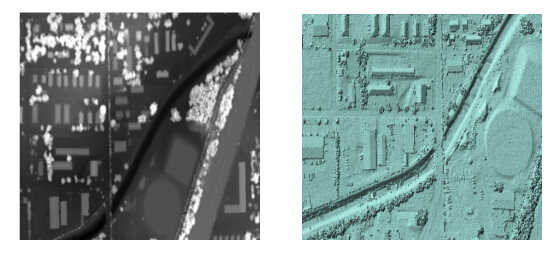
 DownLoad:
DownLoad: 